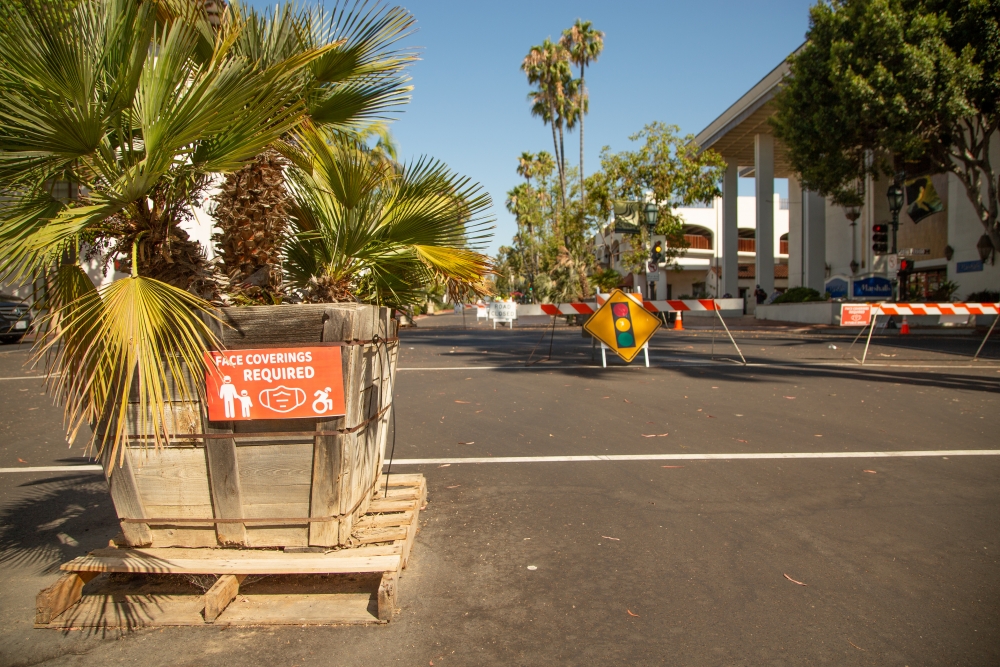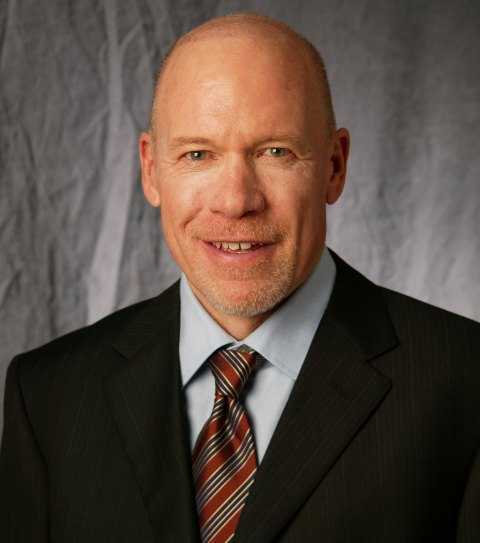

When the first COVID-19 related lockdowns were announced in Santa Barbara a year ago, retail and hospitality business owners braced for the worst, as social distancing and stay-at-home orders slashed revenues and hampered their ability to turn profits. As weeks turned into months, restaurants and retail spaces scrambled to find their footing, managing to stay afloat by taking out small business loans and pivoting toward COVID-safe customer and staff experiences. Still, not everyone survived.
In the recent edition of UC Santa Barbara Economic Forecast Project’s EFP Informs webinar series, economics professor Peter Rupert and Gene Deering, a principal at Radius Group Commercial Real Estate, Inc., took a stroll up State Street, Santa Barbara’s main thoroughfare and home to its most prominent commercial spaces. According to Rupert, the purpose of the walk was “to show people what State Street looks like, explain the vacancy situation and examine how rents might have changed.”
Economic Forecast Project COVID-19 Webinar: A Walk Up State Street
On a balmy weekend day, parts of State Street one year into COVID-19 look almost as though the pandemic never happened. Visitors and locals alike take advantage of the weather to get some sunshine and air and to do some socializing.
Santa Barbara’s weather turned out to be a major asset for the many restaurants of State Street as they leaned on socially-distanced outdoor dining as a COVID-safe alternative to their usual indoor densities. The city’s emergency approval of the closure of a portion of lower State Street last May paved the way for a pedestrian promenade that allowed restaurants more room to do business. For many, these parklets were a lifesaver. Similar plans went into effect in Santa Barbara’s Funk Zone and on Coast Village Road in Montecito.
The economic blow of the pandemic did, however, exacerbate some weaknesses on State Street, where retail had already been flagging for years. Farther up, away from the concentration of eateries and parklets along the waterfront and promenade, storefront vacancies are more prominent, with big apparel shops like Forever 21 and Nordstrom’s closed for good. Most vacancies on State Street are retail spaces.
According to Deering, the 900 block of State Street has the most significant number of vacancies, with nine empty stores. While rents have declined up and down State Street, those on the 900 and 1000 block have seen the largest decline, he said.
Filling the larger vacancies looks to be a challenge, according to Deering, who noted that smaller commercial spaces are currently more popular, and that some tenants have turned to space-sharing in order to defray costs and provide extra financial security. Converting large-format commercial space to office space could be a solution, as it was for the former Saks Off 5th building on the 1000 block, which became office space for Amazon just before the pandemic began.
“That’s a transition we’re also seeing on State Street where retail space is becoming office,” he said. The former Enterprise Fish Company on lower State Street is undergoing the same change into a “high-end tech office,” and the former Macy’s on the 700 block is the largest example of this conversion, with the owners trying to lease all 136,000 square feet to office tenants, he noted.
There is light at the end of the tunnel, with vaccines making their way through the population and the slow lifting of COVID restrictions. Looking ahead, the panel, which included South Coast Chamber of Commerce President and CEO Kristen Miller, contemplated a post-COVID-19 State Street: Will the successful pedestrian promenade remain? Though it receives wide support from the business community, making the area permanently pedestrian when city activity returns to normal requires consideration for things such as emergency access and the re-tightening of regulations that the Department of Alcoholic Beverage Control relaxed at the start of the pandemic, according to Rupert.
In the meantime, the denizens of lower State continue to troubleshoot: How to keep pedestrians and bicycles from colliding (answer: a brand-new bike lane)? How to make narrow retail storefronts more visible in a profusion of parklets? How to revitalize retail?
“It’s time for creativity,” Miller said. “We have an opportunity to do things differently ... to look at a wide variety of options and solve some of our own ongoing problems.”
State Street is one of several business districts in the Santa Barbara area that has the Economic Forecast Project’s attention; according to Rupert, future EFP Informs webinars will highlight other commercial zones in the area.



